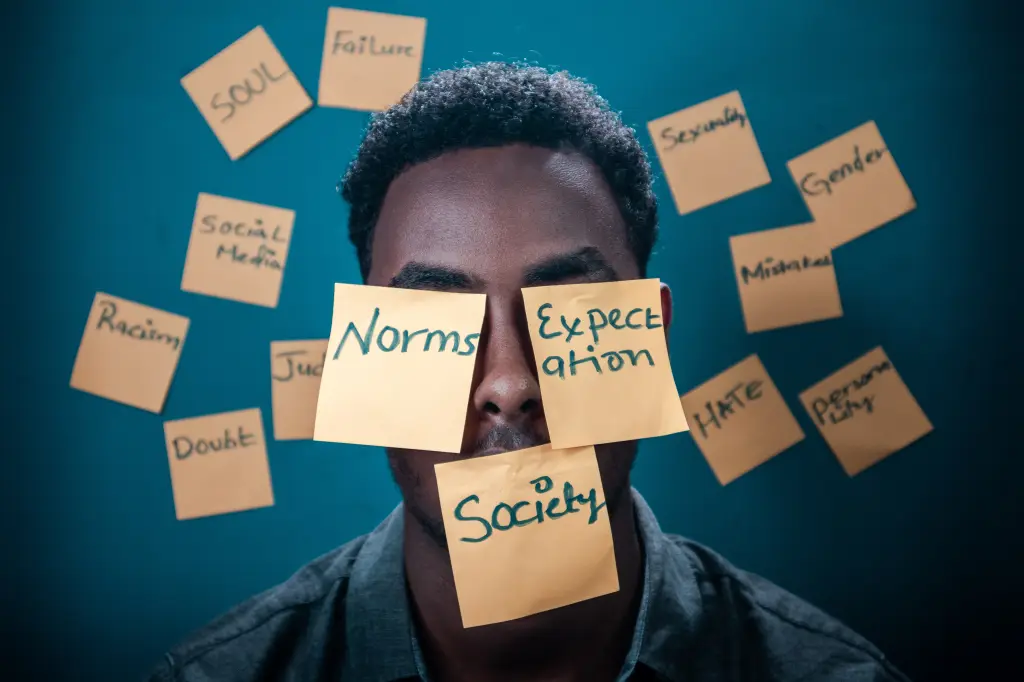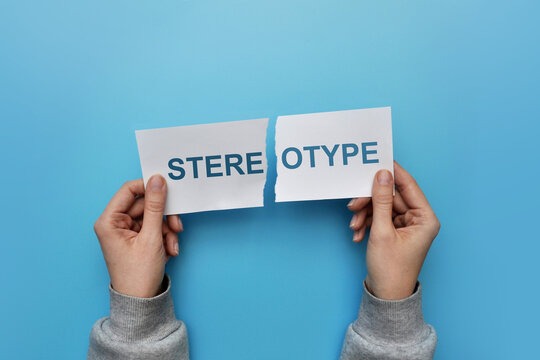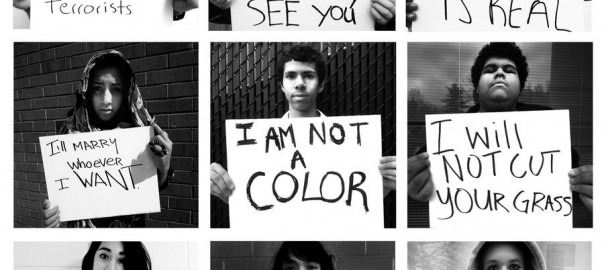Stereotyping: Its Origins, Impacts, and How to Combat It
Stereotyping is the practice of ascribing generalized and often oversimplified characteristics to individuals based on their membership in a particular group. These groups can be defined by race, gender, nationality, religion, age, or other attributes. While stereotypes can sometimes arise from common observations, they are inherently reductive and can lead to numerous negative consequences. This article explores the origins of stereotyping, its impacts on individuals and society, and strategies to combat it.

Origins of Stereotyping
Stereotypes originate from several sources, including:
1. Social and Cultural Influences
Historical Context: Many stereotypes have deep historical roots, often dating back to periods of colonization, slavery, or significant social changes. These historical contexts shape societal views and perpetuate stereotypes over generations.
Media Representation: The portrayal of different groups in media significantly influences public perception. Films, television, news, and literature often rely on stereotypes for character development or storytelling, reinforcing simplistic and inaccurate views.
2. Cognitive Processes
Heuristics and Simplification: The human brain tends to use heuristics, or mental shortcuts, to simplify complex information. Stereotypes are one form of heuristic that helps people quickly categorize and make sense of the social world, albeit inaccurately.
Ingroup vs. Outgroup Dynamics: People naturally categorize others into ingroups (those who are like us) and outgroups (those who are different). Stereotypes often emerge as a way to distinguish between these groups, leading to overgeneralization about outgroup members.
Impacts of Stereotyping
Stereotyping can have profound and far-reaching impacts on both individuals and society as a whole:
1. Individual Impacts
Self-Perception and Identity: Stereotypes can negatively affect how individuals see themselves. For example, being subject to negative stereotypes can lower self-esteem and reinforce feelings of inadequacy or alienation.
Performance and Behavior: Stereotype threat, the fear of confirming negative stereotypes about one’s group, can adversely impact an individual’s performance in academic, professional, or social settings. This phenomenon can lead to a self-fulfilling prophecy, where the individual’s performance aligns with the negative stereotype.
2. Social Impacts
Discrimination and Inequality: Stereotypes can lead to discriminatory behavior and systemic inequality. When stereotypes influence decision-making processes in areas like hiring, education, and law enforcement, they perpetuate biases and reinforce social hierarchies.
Intergroup Conflict: Stereotypes contribute to misunderstandings and tensions between different social groups. They can foster prejudice, increase social divisions, and even lead to conflict and violence.
Combating Stereotyping
Efforts to combat stereotyping involve both individual actions and broader societal changes:

1. Education and Awareness
Critical Thinking and Media Literacy: Encouraging critical thinking and media literacy helps individuals recognize and question stereotypes in media and everyday life. Education systems can play a crucial role in teaching students to identify and challenge biased representations.
Diverse Representation: Promoting diverse and accurate representations of different groups in media and public life can counteract stereotypes. When people see varied and realistic portrayals, they are less likely to rely on oversimplified views.
2. Personal Interactions and Relationships
Intergroup Contact: Positive interactions and relationships between people from different groups can reduce stereotypes. Such contact helps individuals see others as unique individuals rather than representatives of a stereotyped group.
Empathy and Perspective-Taking: Encouraging empathy and perspective-taking allows individuals to understand the experiences and challenges of others. This understanding can reduce prejudices and promote more inclusive attitudes.
3. Policy and Institutional Changes
Anti-Discrimination Laws: Implementing and enforcing anti-discrimination laws can help reduce the impact of stereotypes in areas like employment, education, and housing. These laws provide legal recourse for individuals facing discrimination.
Inclusive Practices: Organizations and institutions can adopt inclusive practices that promote diversity and equity. This includes unbiased hiring practices, diversity training programs, and creating environments where all individuals feel valued and respected.
Stereotyping is a pervasive issue with deep roots in human cognition and social structures. Its impacts can be profoundly negative, affecting individuals’ self-perception, performance, and contributing to societal discrimination and conflict. Combating stereotypes requires a multifaceted approach, involving education, positive personal interactions, and systemic changes. By recognizing and addressing the harmful effects of stereotypes, individuals and society can work towards a more inclusive and equitable world where people are valued for their unique qualities rather than reductive generalizations.
The Pros and Cons of Stereotyping: Understanding Its Dual Nature
Stereotyping, the act of ascribing generalized and often oversimplified characteristics to individuals based on their membership in a particular group, is a pervasive phenomenon. While typically hometogel viewed negatively due to its association with prejudice and discrimination, stereotyping can also have certain practical advantages. This article explores the pros and cons of stereotyping to provide a balanced perspective on its impact.

Pros of Stereotyping
1. Cognitive Efficiency
Simplifies Information Processing: Stereotyping serves as a cognitive shortcut, allowing individuals to quickly process and categorize large amounts of social information. This simplification can be useful in everyday decision-making, enabling people to make snap judgments in situations where they lack complete information.
Reduces Cognitive Load: By categorizing individuals into groups, stereotypes reduce the complexity of the social world. This reduction in cognitive load can be beneficial, especially in high-stress or fast-paced environments where quick decisions are necessary.
2. Social Cohesion and Identity
Ingroup Solidarity: Stereotypes can strengthen group identity and cohesion by emphasizing similarities within a group and differences with outsiders. This ingroup solidarity can foster a sense of belonging and collective identity, which is important for social bonding and cooperation.
Cultural Continuity: Stereotypes can preserve cultural traditions and norms by reinforcing commonly held beliefs and practices. This continuity helps maintain a shared cultural heritage, which can be important for societal stability and cohesion.
Cons of Stereotyping
1. Inaccurate and Harmful Generalizations
Oversimplification: Stereotypes often oversimplify complex human traits and behaviors, leading to inaccurate and unfair representations of individuals. These generalizations fail to account for the diversity and uniqueness within any group, perpetuating misconceptions and misinformation.
Prejudice and Discrimination: Negative stereotypes can lead to prejudice, which is the irrational and unfounded dislike of a person based on their membership in a particular group. This prejudice can result in discrimination, where individuals are treated unfairly and unjustly because of stereotypical beliefs.
2. Social and Psychological Harm
Stereotype Threat: The fear of confirming negative stereotypes about one’s group can negatively impact an individual’s performance and behavior. This phenomenon, known as stereotype threat, can hinder academic achievement, professional success, and personal development.
Lowered Self-Esteem: Being the target of negative stereotypes can damage an individual’s self-esteem and mental health. Constant exposure to stereotypical judgments can lead to feelings of inferiority, anxiety, and depression.
3. Perpetuation of Inequality
Bias in Decision-Making: Stereotypes can influence decision-making processes in various domains, including employment, education, and law enforcement. These biases can perpetuate systemic inequalities, as individuals from stereotyped groups may face unfair treatment and limited opportunities.
Barrier to Social Mobility: Stereotypes can create barriers to social mobility by limiting access to resources, opportunities, and support networks. This restriction can entrench existing social hierarchies and make it difficult for marginalized groups to improve their socio-economic status.
Balancing the Impact of Stereotyping
To mitigate the negative impacts of stereotyping while acknowledging its cognitive functions, several strategies can be employed:
1. Promoting Education and Awareness
Critical Thinking Skills: Educating individuals to think critically about stereotypes and their origins can help reduce reliance on these cognitive shortcuts. Teaching people to question and analyze stereotypes promotes a more nuanced understanding of social diversity.
Media Literacy: Encouraging media literacy helps individuals recognize and challenge stereotypical representations in films, television, news, and other forms of media. By consuming media more critically, people can become more aware of the biases they encounter.
2. Encouraging Positive Intergroup Interactions
Intergroup Contact: Facilitating positive interactions between different social groups can reduce stereotypes and promote mutual understanding. These interactions help individuals see each other as unique individuals rather than representatives of stereotyped groups.
Empathy and Perspective-Taking: Promoting empathy and perspective-taking allows individuals to understand and appreciate the experiences of others. This emotional connection can reduce prejudice and foster more inclusive attitudes.
3. Implementing Policy and Institutional Changes
Anti-Discrimination Laws: Enforcing anti-discrimination laws ensures that individuals are treated fairly regardless of their group membership. Legal frameworks provide protection against biased practices in employment, education, and other areas.
Inclusive Practices: Organizations can adopt inclusive practices that promote diversity and equity. This includes unbiased hiring procedures, diversity training programs, and creating environments where all individuals feel valued and respected.
Conclusion
While stereotyping can offer cognitive efficiency and contribute to social cohesion, its drawbacks are significant. Stereotyping can lead to inaccurate generalizations, perpetuate prejudice and discrimination, and cause social and psychological harm. By promoting education, encouraging positive intergroup interactions, and implementing inclusive policies, society can reduce the negative impacts of stereotyping while fostering a more inclusive and equitable environment. Understanding and addressing the dual nature of stereotyping is crucial for building a world where individuals are valued for their unique qualities rather than reductive generalizations.
Read More Article About “Balanced Perspective: Navigating Life’s Complexities Wisdom“













